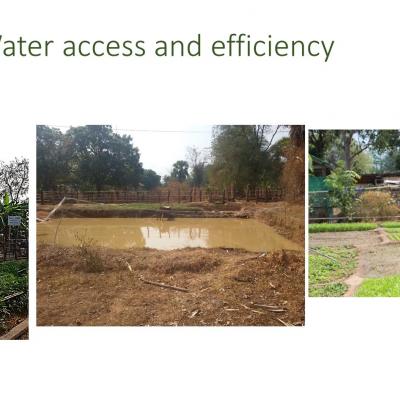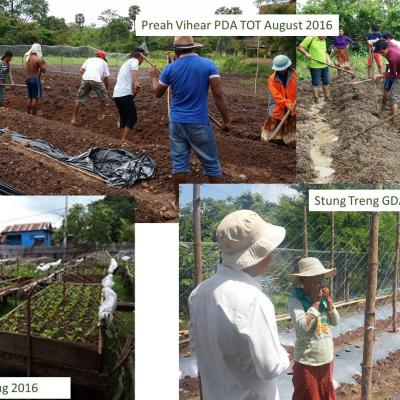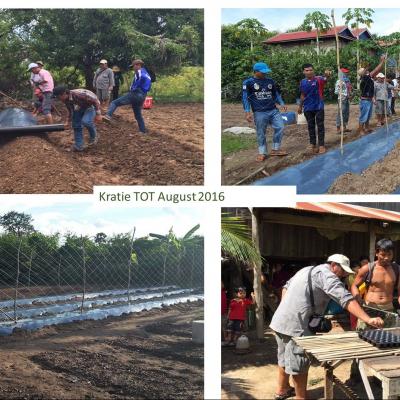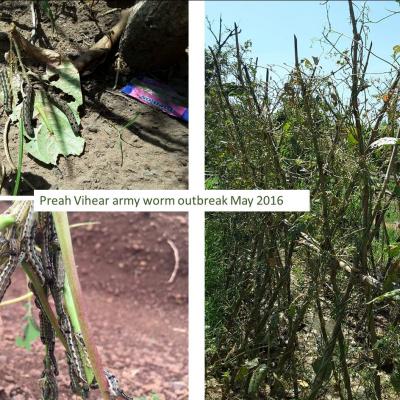CEDRIG Opérationnel
Rapport PDFCambodian Horticulture Project Advancing Income and Nutrition (CHAIN) Phase I
Vue d'ensemble
Informations Générales
Auteur
Moritz Krüger
Dernière mise à jour
novembre 2020
Objectif général
Promotion of horticulture value chains in Preah Vihear, Stung Treng, Kratie and Oddar Meanchey provinces, with a strong focus on women and delivering sustainable income growth and improved household food security and resilience
Pays
- Cambodge
Budget
CHF 4.000.000
Durée de l’activité
01.12.2014 - 30.11.2017 (Phase I)
Sommaire
Description
In Cambodia, more than 40 % of the rural poor suffer from food insecurity. The increasing market demand for vegetable and fruits provides a huge opportunity for small holder farmers and processors, in particular women to increase income and food security. The Cambodia Horticulture Advancing Income and Nutrition (CHAIN) project supports farmers and processors in increasing sustainable production, income and resilience in four of the poorest provinces of Cambodia - Kratie, Stung Treng, Preah Vihear and Oddar Manchey. With the particular focus on the fruits and vegetables sector, CHAIN tackles market system constraints to improve the service delivery to poor farmers households, women headed households and ethnic minorities. CHAIN will support smallholder farmers to diversify into growing fruit and vegetables through the introduction of modern horticultural techniques and market linkages required to generate much-needed additional income, and it will also address poor household nutrition by supporting a diversification of diets.
Termes clés
- agriculture and food security
Secteurs d’intervention
- Agriculture
- Sécurité alimentaire
- Développement rural
- Gestion de l’eau
Documents
Images
Logos
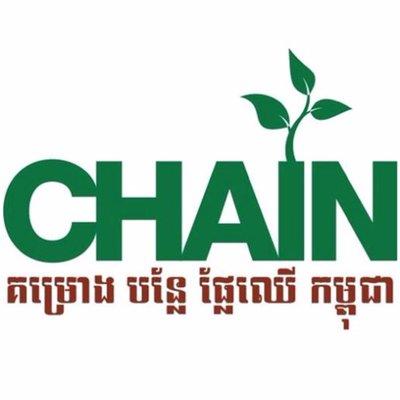


Perspective des risques
Aléas dûs à la dégradation de l’environnement
Nom de l'aléa
Nuisibles et épidémies
Conséquence
Loss of income and crop production
Description de la conséquence
The invasion of flea beetle larvae (Chrysomelidae: Alticini) leads to a severe destruction of vegetables, especially root and leaf vegetables. Flea beetles execute their most severe attacks during dry weather and are most active on sunny days. Occurrence increased in the past 3-4 years.
Gravité
Nuisible
Vulnérabilités
Increased pressure on smallholder farmers and income, loss in crop and vegetable production, low means of savings, limited knowledge of mitigation measures.
Probabilité
Probable
Importance
Risque moyen
Risque sélectionné
OuiMesure sélectionnée
OuiMesure sélectionnée
OuiAléas naturels (hydro-météorologiques et géologiques)
Nom de l'aléa
Inondations
Conséquence
Destruction of crops and vegetables, loss of income
Description de la conséquence
Weather patterns are increasingly unpredictable: increased heavy rainfall, flooding, unpredictable start of the rainy season. Long-lasting episodes with too much rain cause rotting of rice plants & vegetables during rainy season. The existing drainage and irrigation practices used by communities are largely insufficient to ensure the survival of crops and seeds during and after intense rain episodes followed by severe droughts. No sufficient early warning system is in place, neither for households nor for the agricultural sector. Current weather forecasts and traditional knowledge have proven inaccurate and unreliable.
Gravité
Nuisible
Vulnérabilités
Communities' coping mechanisms are overwhelmed. Frequent (often annual) and often complete loss of crop production.
Probabilité
Très probable
Importance
Risque élevé
Risque sélectionné
OuiMesure sélectionnée
OuiMesure sélectionnée
OuiNom de l'aléa
Sécheresses
Conséquence
Destruction of crops and vegetables, loss of income
Description de la conséquence
Higher irregularity of the rainy/dry seasons: earlier onset of the hot season, prolonged duration of the dry season, and shortened rainy season.
Gravité
Très nuisible
Vulnérabilités
Communities' coping mechanisms are overwhelmed. Loss of crop production due to disruption of the traditional planting-replanting-harvesting cycle. Traditional knowledge is no longer applicable.
Probabilité
Très probable
Importance
Risque élevé
Risque sélectionné
OuiMesure sélectionnée
OuiConséquence
Long-term lack of water availability
Description de la conséquence
Water scarcity and droughts are relatively new in the project area (tropical Aw climate). Water resources are used without regulation. Available water resources are inadequately monitored or unknown. Groundwater levels are declining at an estimated rate of 20cm/year, but no consistent water resources monitoring is in place.
Gravité
Très nuisible
Vulnérabilités
Agricultural sector and smallholder farmers are already not prepared to droughts or water scarcity. Further water usage by the growing agricultural sector will put more pressure on water resources and aggravate the situation.
Probabilité
Probable
Importance
Risque élevé
Risque sélectionné
OuiMesure sélectionnée
OuiMesure sélectionnée
OuiAléas dûs aux changements climatiques (et à la variabilité du climat)
Perspective des impacts
Impacts sur l’environnement
Élément du projet
Commercial and homestead producers and processors increase productivity (incl. year-round production)
Impact négatif potentiel
Increased use of chemical fertilizers and pesticides
Impact sélectionné
OuiMesure sélectionnée
OuiImpact négatif potentiel
Increased use of (ground)water resources
Impact sélectionné
OuiMesure sélectionnée
Oui
